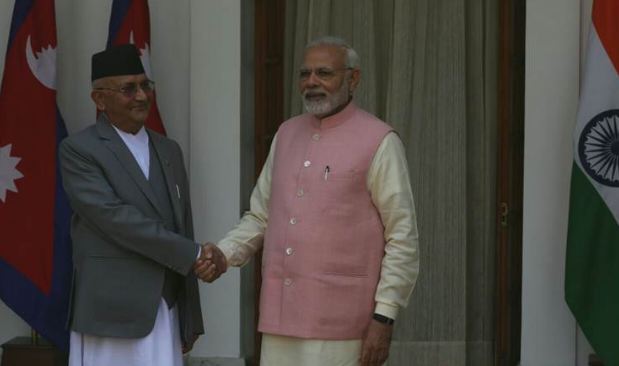India and China are largely seen as dominant global players in future. The rise of both the neighbours in economic and military fields, simultaneously coupled with China’s repeated transgressions have led to a highly competitive attitude in the region. China has been trying to extend its influence in the Indian Ocean region as well as in small landlocked nations such as Nepal which would have ideally served as a buffer state between the two rising giants. However, ever since the Modi government stormed into power in 2014, it has not shown any complacency and made almost all possible efforts to counter the Chinese influence.
In yet another move which must be seen as a bold attempt by India to counter the Chinese influence in Nepal, the first passenger train service to run on broad gauge between India and Nepal is likely to start from December this year. The train will run between Jayanagar in Bihar to Kurtha, Dhanusa district of Janakpur Zone of South-Eastern Nepal. It is a 34 kilometer long stretch on which the passenger train will run. An immigration check-post is likely to come up which will be manned either by the Bureau of Immigration or by the State government.
The Nepalese also seem pretty enthusiastic about this development and have informed the railways that the rail section will be opened with four trips. Nepalese authorities also expressed the desire to run freight trains on this section as well. No visa will be required for Indian or Nepalese citizens to travel across the border through this stretch.
This section is a part of INR 5.5 billion rail project. The project is divided into three phases. There are four rail projects in the pipeline between India and Nepal, including the Raxaul- Kathmandu rail project. The train service will for sure bolster the relations between both these nations. It is important to keep in mind that after China decided to link Kathmandu with its railway networks; India proposed the construction of new rail links between India and the Himalayan nation during the visit of Nepalese prime minister K P Sharma Oli to India. Therefore, India has done well to pre-empt the Chinese plans of extending their rail network to Nepal and has countered it immediately. The government of the day seems to have realised the significance of securing warm and close relations with Nepal given the fact that China is trying its best to increase its influence in the region.
This is not for the first time that India has tried to put its relations back on track with Nepal. In fact, ever since India realised that China has been investing heavily in Nepal and following a brief period of embitterment in Indo-Nepal relations, the Government of India has started making efforts to bring relations between the two countries back on track. PM Modi’s visit to Nepal and initiation of Janakpur-Ayodhya bus service helped India in striking a chord with Nepal. Both these nations share cultural affinity and the historical ties and this significantly has taken the relations forward.
It is not very difficult to understand why close relations with Nepal and countering Chinese influence in the landlocked nation is crucial for India. The Himalayan country is strategically located and its geographical location is such that if the Chinese get total control of Nepal, they will be able to cut off the Siliguri corridor or the ‘Chicken’s neck’- a narrow passage of 22 kilometers that connects north-east India with rest of the country and other bordering states such as Bhutan, Bangladesh and Nepal. India, therefore, needs to be on its toes and look out for all possible moves by China aimed at increasing its influence in the region. The Indian government has been pretty successful in checking the growing Chinese influence in Sri Lanka and in turn, improving its own relations with the island nation. Now, it is time for India to replicate the same diplomatic exploits in case of Nepal as well.































